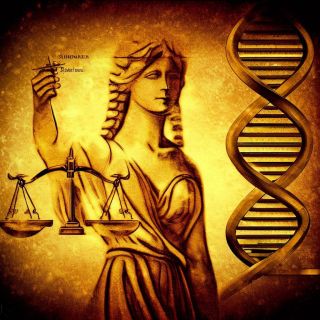Law and Crime
How Laws Evolved by Natural Selection
Why humans make endless laws and then fight to control them.
Posted August 8, 2023 Reviewed by Abigail Fagan
Key points
- The evolutionary origins of laws may be similar to the evolutionary origins of tools.
- Laws are produced by moral judgment.
- Laws may help people choose sides in a conflict while avoiding the dangers of alliances and hierarchy.
Why do humans make so many laws? In a new article, I argue that the human ability to make laws evolved by natural selection. Here are a few snapshots.
Laws may seem unlikely to come from evolution. There are so many laws, and they differ so much across societies. This variation shows that natural selection did not install a single code of laws in the human mind. We do not have 10 commandments, or five or 20, etched into our minds, or else we would see the same code of laws repeated in society after society.
But does this mean that human evolution has little to tell us about the origin of laws? Not at all. To see why, just compare laws to tools. Humans make countless tools, and tools vary tremendously across societies. Yet, it is well-understood that humans evolved adaptations to make and use tools. The human mind does not have a fixed set of blueprints for 10 or 20 tools. Rather, natural selection installed in the mind principles of physics and engineering that humans use to make new tools for new purposes. The same is true of laws: Humans evolved a creative power to make limitless laws by applying a stock of core principles. Humans are lawmakers like we are toolmakers.
With this in mind, we can dissect a sample of laws to find the common parts that humans use to make them. The parts of laws are ideas that we compose into messages, such as Thou shalt not kill, and Whosoever lieth with a beast shall surely be put to death (Exodus, 22:19). Some of the ideas that come up repeatedly include indefinite people such as thou and whosoever, actions such as kill, steal, and lie with, intentions such as wanting and planning, as well as truth, impartiality, possibility, necessity, punishment, and proportion.
Having laid out the parts of laws, we can then inspect them for clues about their evolutionary purpose. What is all this lawmaking for? How do humans use laws in evolutionary competition?
We first consider an apparent likeness between laws and threats. Threats are well-understood signals in games of conflict, and like laws, threats warn of punishment that is conditional on some event, such as If you come any closer, then I will punch you. However, on close inspection, we find that threats and laws differ in each of their parts. For instance, threats address a definite person while laws address an indefinite person, and threats are enforced by the threatener while laws are enforced by the whole community. Given these and other differences, we conclude that laws are not the same as threats, and thus cannot be explained by theories of threats.
Next, we compare laws to moral rules and find a close match:
Like laws, moral rules apply to everyone, they set a condition that is a specific action and requires evidence, they concern an infinite variety of actions, they are enforced by everyone with blame and punishment, and the punishment is proportionate. Moral rules match laws part for part. (DeScioli, 2023, p. 199)
Given this correspondence, we conclude that laws are produced by moral judgment. Moreover, I have previously argued that moral judgment evolved as a strategy for choosing sides in conflicts. Humans use the moral strategy to avoid some of the dangers of choosing sides by alliances and hierarchies. In the moral strategy, people choose sides by rules of action, like opposing a thief according to the rule, Thou shalt not steal, rather than choosing sides by alliances or hierarchy, such as supporting an ally or superior who stole someone’s goods. And since moral judgment is the source of laws, the parts of laws are also patterned by the same function: choosing sides in conflicts while avoiding the dangers of alliances and hierarchy.
Hence, we have found the origin of laws in our strategies for choosing sides. But we are not finished. The ability to make laws creates new games and spurs a multitude of strategies and counterstrategies:
The evolution of laws is not the end of the game but only the beginning. Once humans can compose laws to settle conflicts, the next problem is that they can make too many.... As prolific lawmakers, humans can easily produce a multiplicity of laws too numerous to remember and too discordant to apply. (p. 202)
To prevent a chaotic proliferation of laws, humans evolved the ability to debate which laws to accept into the community’s code and which to reject. Moreover, each person judges potential laws according to their own interests, so people inevitably disagree on many laws, giving rise to a battle to control the laws.
When many people disagree on a law, it is unstable and varies over time and across societies.… Locked in disagreement, the opponents struggle in a tug of war to control the law. (p. 202)
Last, I illustrate the competition to control the laws by examining common skirmishes over laws of violence, property, sex, factions, and power. In each case, we see how opponents struggle to enact opposite laws, meaning laws that would punish opposite sides in a conflict. We also encounter what I call paradoxical laws, such as Thou shalt not betray our faction. Paradoxical laws mimic the characteristic form of laws despite the fact that they undermine the rule of law in general, replacing it with the rule of faction or hierarchy.
The struggle to control the laws also damages science, because committed partisans condemn facts and ideas that could weaken the case for the laws they favor. Indeed, this may be why “the science of human evolution itself has long been accused of subverting the foundations of morality and society” (p. 207). In closing, I offer a defense against this charge:
In defense, it may help to point out that human evolution does not affirm a single code of laws but rather explains why humans make a great variety of laws and then fight to control them. (p. 207)
This post also appears in the newsletter of the Human Behavior and Evolution Society.





